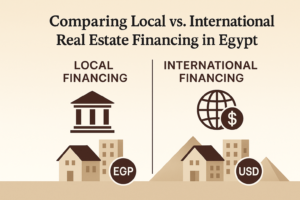Why You Need a Strong Real Estate Portfolio
Investing in real estate is one of the most effective ways to build long-term wealth. However, the key to sustained success lies in strategically building a diversified real estate portfolio that generates passive income, appreciates in value, and mitigates risks. Without a well-thought-out plan, investors can easily fall into common pitfalls such as overleveraging, market miscalculations, or relying too heavily on a single type of property.
A real estate portfolio is more than just a collection of properties—it’s a carefully curated asset base designed to maximize returns while minimizing exposure to market fluctuations. Whether you’re a novice investor looking to purchase your first rental property or a seasoned investor aiming to scale your holdings, understanding how to structure your investments is crucial.
In this guide, we’ll walk you through a step-by-step approach to building and managing a profitable real estate portfolio, covering market research, property selection, financing strategies, and risk management.
1. Define Your Real Estate Investment Goals
Before purchasing properties, clearly outline your investment objectives. Your goals will dictate the type of properties you invest in, the financing methods you use, and the strategy you implement.
🔹 Common Real Estate Investment Goals:
✔ Generating steady rental income
✔ Long-term property appreciation
✔ House flipping for quick profits
✔ Tax benefits and deductions
✔ Diversification of assets
Understanding your goals helps you determine whether you should focus on residential, commercial, vacation rentals, or multi-family properties.
2. Research and Analyze Real Estate Markets
The success of your real estate portfolio depends on choosing the right markets. Instead of investing in any available property, conduct thorough market analysis to identify high-growth areas with strong rental demand and economic stability.
Key Market Indicators to Evaluate:
✔ Job Growth: Cities with increasing employment opportunities attract more tenants.
✔ Population Trends: Steady population growth signals long-term demand.
✔ Rental Yield: High rental demand ensures strong cash flow.
✔ Infrastructure Developments: New businesses, highways, or public transportation projects boost property value.
✔ Supply vs. Demand: Low vacancy rates indicate strong rental potential.
Use tools like Zillow, Redfin, and local property reports to analyze the best markets for your investment.
3. Diversify Your Real Estate Portfolio to Minimize Risk
One of the biggest mistakes investors make is putting all their eggs in one basket. A well-balanced real estate portfolio includes different types of properties in multiple locations to reduce risks associated with market downturns.
Effective Diversification Strategies:
✔ Invest in Different Property Types: Balance between single-family homes, multifamily units, vacation rentals, and commercial properties.
✔ Expand Across Multiple Markets: Owning properties in various cities or states protects against regional downturns.
✔ Use Mixed Investment Strategies: Combine buy-and-hold, flipping, and short-term rentals for maximum returns.
By diversifying, you protect your portfolio from economic fluctuations and increase income sources.
4. Secure the Right Financing for Your Real Estate Investments
Most investors don’t buy properties with 100% cash. Understanding financing options helps you scale your real estate portfolio efficiently while preserving liquidity.
Popular Real Estate Financing Methods:
✔ Conventional Mortgages: Standard loans for long-term property holding.
✔ Hard Money Loans: Short-term loans ideal for house flipping.
✔ Owner Financing: Directly negotiating with sellers to avoid traditional banks.
✔ HELOC (Home Equity Line of Credit): Using home equity to purchase additional properties.
✔ Real Estate Syndication: Partnering with investors to buy larger properties.
Choose the financing strategy that aligns with your cash flow goals and risk tolerance.
5. Optimize Property Management for Maximum ROI
A well-managed property ensures consistent rental income, lower tenant turnover, and increased appreciation. Whether you self-manage or hire a property manager, effective property management is key to long-term success.
Essential Property Management Practices:
✔ Tenant Screening: Carefully vet tenants to reduce vacancy rates and late payments.
✔ Regular Maintenance: Keeping properties in top condition prevents costly repairs.
✔ Automated Rent Collection: Use online portals for seamless transactions.
✔ Legal Compliance: Stay updated on landlord-tenant laws and regulations.
Poor management can quickly turn a profitable investment into a financial burden.
6. Track Your Portfolio Performance and Adjust Strategies
A successful real estate portfolio requires ongoing evaluation and optimization. Regularly track your investments to ensure they’re meeting financial expectations.
Key Performance Metrics to Monitor:
✔ Cash Flow: Monthly rental income after expenses.
✔ Net Operating Income (NOI): Income minus operating costs.
✔ Capitalization Rate (Cap Rate): NOI divided by property value.
✔ Return on Investment (ROI): Profitability percentage over investment cost.
If a property underperforms, consider adjusting rent, improving management, or selling underperforming assets.
Frequently Asked Questions About Building a Real Estate Portfolio
1. How many properties should I have in my real estate portfolio?
There’s no magic number—it depends on your financial goals, risk tolerance, and market conditions. Some investors thrive with a few high-value properties, while others scale to 20+ units.
2. How do I start investing in real estate with little money?
Options include house hacking, real estate wholesaling, owner financing, or partnering with investors to fund your first deal.
3. What’s the best type of property for beginners?
Single-family rental homes are often a great starting point due to their lower maintenance costs and strong rental demand.
4. Should I invest in local markets or out-of-state properties?
It depends on where you find the best cash flow opportunities. Some investors choose out-of-state markets with higher rental yields.
5. How do I know if a property is a good investment?
Analyze rental yield, appreciation potential, location, and market demand before purchasing. Use tools like cap rate calculators and ROI projections.
Ready to Build a Profitable Real Estate Portfolio? Let Consult Help You
Building a real estate portfolio requires expertise, strategic planning, and market insights. Whether you’re just getting started or looking to scale, Consult offers expert guidance in market analysis, property acquisition, portfolio management, and ROI optimization.
✔ Personalized Investment Strategies
✔ Expert Market Insights
✔ Risk Mitigation and Portfolio Diversification
✔ Maximized Returns on Investment

















